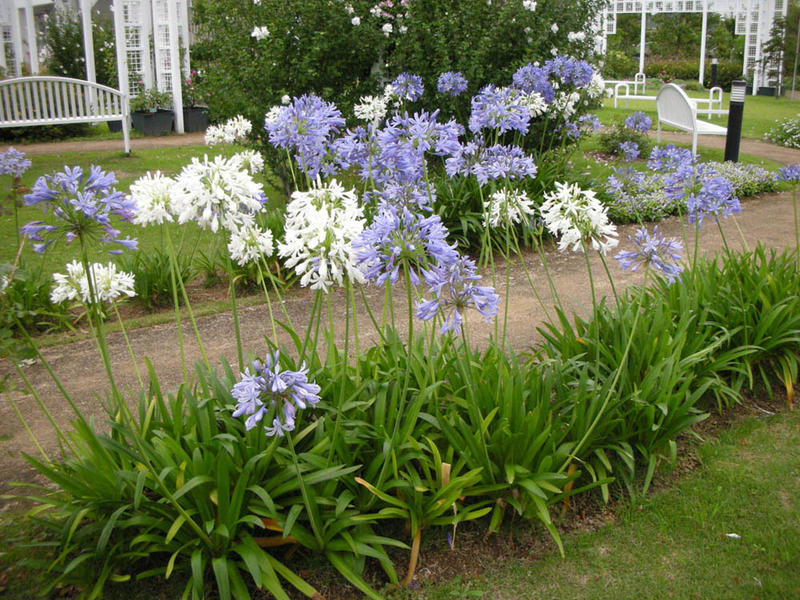Mastering the Art of Agapanthus Care: Essential Actions for Healthy And Balanced Development and Lively Flowers
In the realm of horticulture, the growing of agapanthus stands as a satisfying venture for those who seek to nurture these stylish flowering plants. With their striking blossoms and graceful vegetation, agapanthus has actually captured the focus of garden enthusiasts worldwide. However, achieving optimal growth and dynamic blooms needs a nuanced technique that encompasses numerous crucial steps. From selecting the right variety to understanding pruning strategies, the journey towards growing prospering agapanthus plants is complex and holds the essential to opening the full possibility of these herb gems.
:strip_icc()/snow-storm-agapanthus-18f19b9a-3e7c6c88441b4127a9015f9a9fecec59.jpg)
Selecting the Right Agapanthus Selection

When choosing the appropriate Agapanthus range for your garden, take into consideration aspects such as climate viability, flower shade, and growth habit. Furthermore, think about the environment in your area to ensure the Agapanthus variety you select can grow in your certain conditions. Recognizing the growth practice of various Agapanthus selections is vital for proper placement within your garden.
Ideal Growing Problems
Considering the ideal ecological requirements is vital for successful Agapanthus farming. Agapanthus plants are delicate to cool temperature levels and should be secured from frost throughout wintertime months.
To guarantee healthy development and dynamic blossoms, plant Agapanthus bulbs at a depth of regarding 2-4 inches and area them 8-12 inches apart. Mulching around the base of the plants assists maintain wetness and reduces weed development.
Watering and Feeding Tips
Maintaining proper wetness levels and offering vital nutrients are crucial elements in the care program for Agapanthus plants. It is important to strike a balance when it comes to watering Agapanthus. If overwatered, these plants prefer consistently damp soil yet are vulnerable to root rot. Throughout the growing period, water deeply as soon as a week, ensuring the dirt is well-draining to stop waterlogging. In hotter environments or throughout durations of drought, even more regular watering may be essential to keep the dirt equally damp. Nonetheless, decrease watering in the winter season to avoid waterlogged conditions.
Feeding Agapanthus is crucial for advertising healthy growth and prolific blossoms. Apply a balanced plant food, such as a 10-10-10 formula, in the very early spring as new development emerges. By complying with these watering and feeding tips, you can guarantee your Agapanthus plants prosper and generate dynamic, durable blooms.
Trimming Methods for Agapanthus
Trimming Agapanthus plants at the proper times and with appropriate techniques is vital for preserving their health and wellness and promoting optimal growth and blooming. The suitable time to prune Agapanthus is in late winter or very early springtime before brand-new development arises.
Deadheading invested flowers can additionally reroute the plant's energy right into producing more flowers rather than establishing seeds. If you desire to gather seeds for proliferation, leave some blossoms to completely dry and mature on the plant.
Bear in mind to utilize tidy, sharp tools to make accurate cuts and decrease the danger of introducing illness. Agapanthus. Normal pruning will aid keep your Agapanthus looking cool and healthy while guaranteeing a plentiful screen of gorgeous blooms
Dealing With Typical Insects and Illness
After making certain appropriate trimming strategies for Agapanthus, it is necessary to resolve usual parasites and diseases that can influence the health and wellness and vitality of these plants. Agapanthus plants are typically durable but can still fall victim to certain problems. One usual parasite that influences Agapanthus is the Agapanthus gall midget. This little, orange fly lays its eggs in the vegetation, bring about altered development and blossom buds that stop working to open. To fight this insect, prune and damage any kind of afflicted plant parts and think about making use of insecticidal soap.
Additionally, Agapanthus plants can endure from root rot if they are grown in improperly draining soil. By being vigilant and taking punctual activity against conditions and bugs, you can aid your Agapanthus plants flourish and create vibrant flowers. Agapanthus.

Conclusion
In final thought, mastering the art have a peek at this site of agapanthus treatment entails selecting the right selection, giving excellent growing conditions, correct watering and fertilizing, ideal pruning techniques, and addressing common pests and conditions. By complying with these essential actions, you can make sure healthy and balanced growth and vivid blooms for your agapanthus plants. Keep in mind to on a regular basis keep an eye on and maintain your plants to advertise their overall health and longevity.
To guarantee healthy and balanced growth and vibrant flowers, plant Agapanthus bulbs at a deepness of regarding 2-4 inches and area them 8-12 inches apart. By adhering to these watering and fertilizing ideas, you can guarantee your Agapanthus plants thrive and create dynamic, durable blooms.
One common bug that impacts Agapanthus is the Agapanthus gall midge. Furthermore, Agapanthus plants can suffer from origin rot Your Domain Name if they are grown in inadequately draining pipes dirt. By complying with these vital steps, you can make sure healthy and balanced growth and vibrant blooms for visit the website your agapanthus plants.